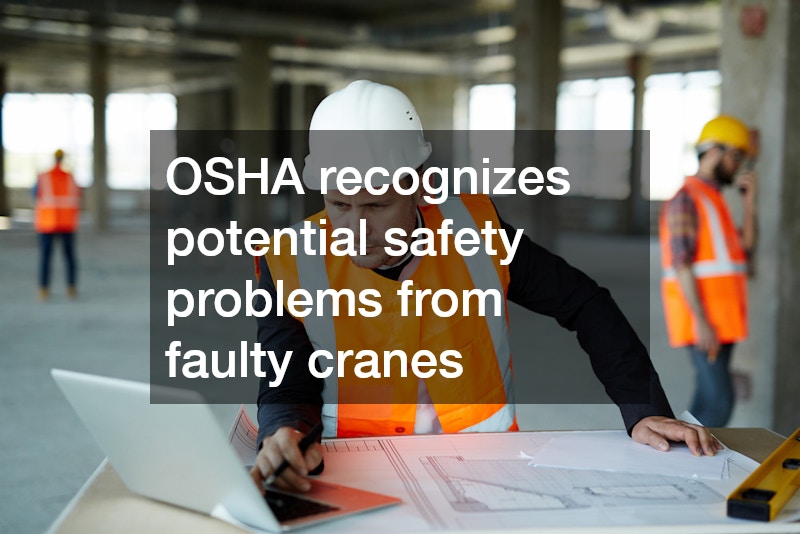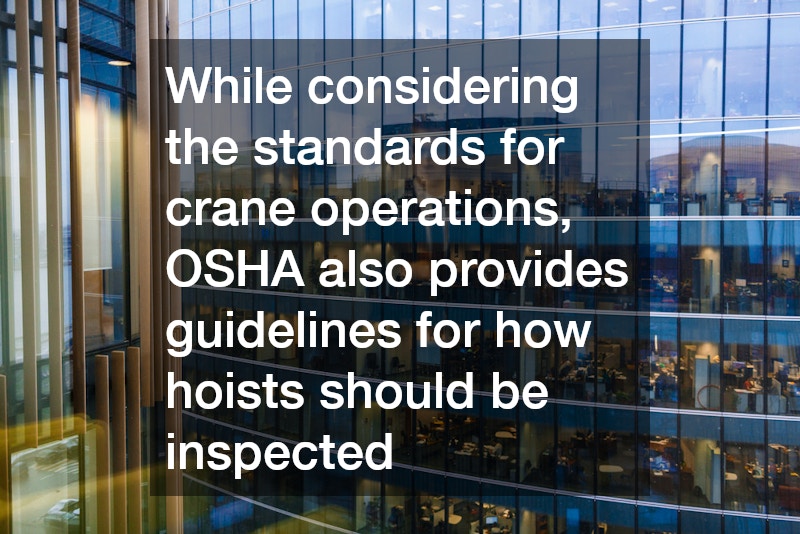
If you are an owner or manager of a construction company, one of your essential concerns will be maintaining your construction equipment. Just as your car needs regular maintenance, like oil changes, your construction vehicles also need assessment and preemptive maintenance tasks. If you have a crane, according to OSHA, it must have an annual crane inspection according to law.

OSHA recognizes potential safety problems from faulty cranes, so it has issued mandated annual crane inspection requirements. A licensed crane inspector must conduct your crane inspections, and their inspection certificate must be posted in your shop office. The same documents explaining the inspection procedure will also give you instructions for safely operating your crane. They will be looking for your company’s daily and weekly operation logs.

While considering the standards for crane operations, OSHA also provides guidelines for how hoists should be inspected. According to Safety Culture, a hoist should be lifted and lowered each day and observed by a trained team member for basic safety guidelines. Most construction companies will have a safety checklist for their hoists and will train several people to perform the inspection. Additionally, OSHA emphasizes the importance of proper record-keeping for all safety inspections, which can help protect your company from potential liability in case of an accident. Failing to comply with these regulations not only jeopardizes safety but can also lead to hefty fines and project delays.
In order to keep construction machinery and heavy equipment in optimum working condition, regular maintenance and repair services are needed. In 2009, for example, the total revenue for these services amounted to approximately $29 billion within the U.S.
Employment within the construction equipment industry has continued to experience growth. From 2016 to 2026, projections indicate that this will increase by12%. It’s important to note that in 2016 alone, there were roughly 426,000 jobs within the construction machinery and heavy equipment industry. In addition to requiring excavator repair and maintenance, hydraulic travel motors and other vital equipment will require attention as well.
A Few Excavator Statistics
There are three different sizes of excavators. In addition to compact excavators, mid-size and large are used for a variety of purposes. When it comes to weight, excavators range between 3,790 to 188,716 pounds. An excavator’s net rated horsepower also varies. This can range from 14.5 to 512 horsepower. It’s also essential to be aware of an excavator’s maximum digging depths. These depths can amount to roughly 32 feet.
Final Drive Gear Maintenance
One of the most important aspects of final drive gear maintenance is to check the gear oil on a regular basis. This should be taken care of once a month or every 100 hours that the equipment is in operation. While the gear oil may need to be replaced more often, this should at least be taken care of once per year. When these recommendations aren’t followed, it can create problems with the final drive gear. In some instances, this may require repair, while in others it may necessitate replacement.
Hydraulic Travel Motors and Other Essential Parts
When you work within the construction industry, you know how vital it is for your excavation and other equipment to be in optimum condition. From time-to-time, it may be necessary for your company to replace hydraulic travel motors and other parts. It may also be necessary to install new final drive motors for Bobcats, Caterpillars, and John Deer vehicles. Once you speak with a representative, you’ll be able to learn more about the available hydraulic travel motors and other essential parts to ensure that your equipment is in excellent operating order.
